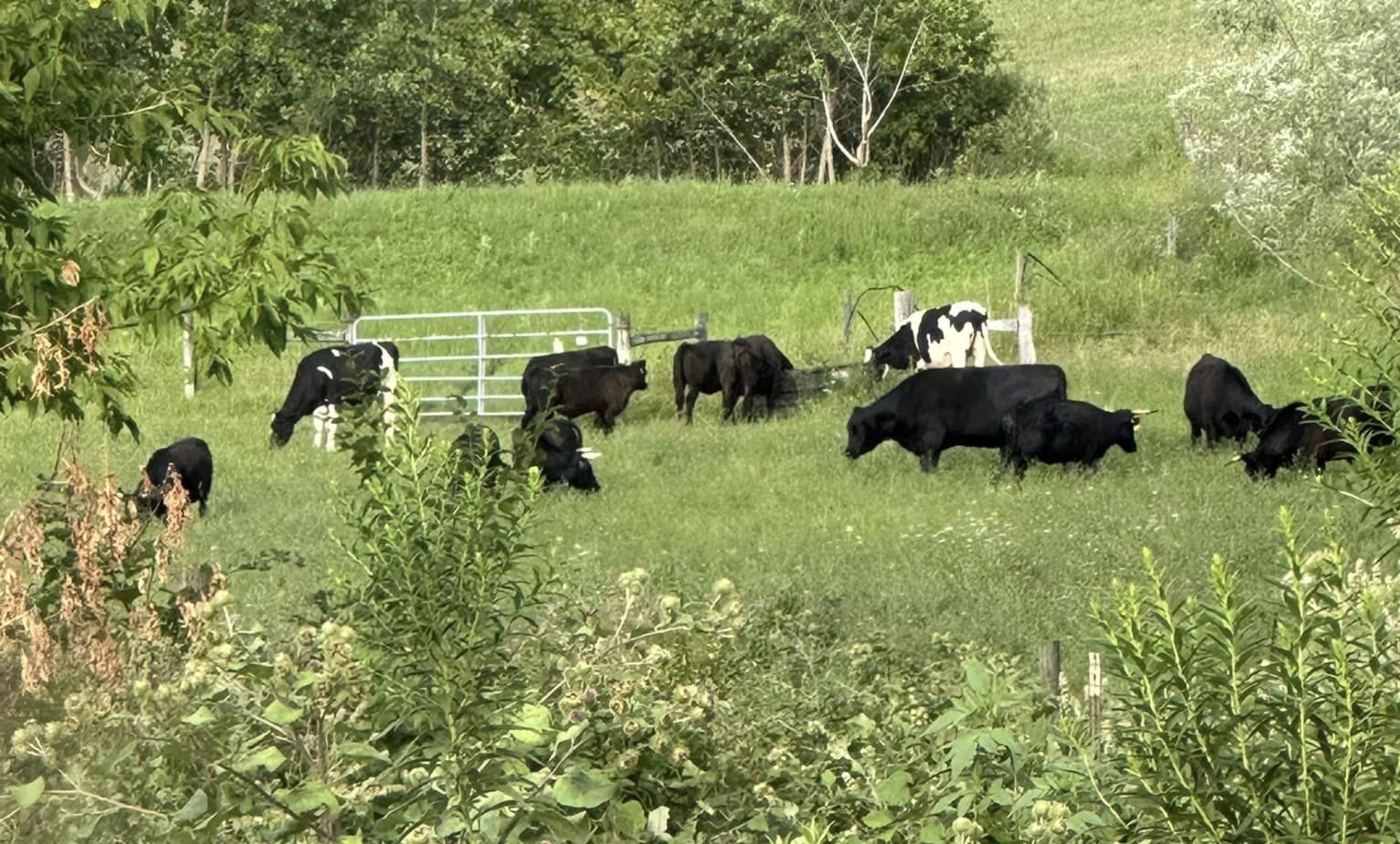Lots of things come from the Post Office: bills, refund checks, Amazon packages, catalogs, magazines. But did you know that we get baby chicks in the mail? That’s right!
We get day old chicks from a hatchery in Pennsylvania. They are hatched at the beginning of the week, shipped overnight or 2 day air, and we get them when they are a day or two old. We get a phone call from the Post Office that they have arrived and then we go pick them up. Here is a picture of a box with baby chicks. This box holds 100 chicks – 25 in each quarter. So yes, our baby chicks really do come from the Post Office.
How can the chicks survive the trip? They have each other to stay warm as they travel. As for food, my understanding is that part of the egg stays inside the chick and feeds the chick for the first week of its life. So the chick doesn’t need a lot of food and water right away, which allows hatcheries to ship birds.
Once the chicks arrive here, we put them in a brooder in the barn. This is a protected area that keeps predators – weasels, rats, cats, hawks – out and keeps the chicks in. It also has heat lamps that the chicks can live under so they can stay warm until they have the necessary feathering to go outdoors. We dip their beaks in water so they can find the water in the future. Sometimes we also dip their beaks in the (non-gmo) feed, so that they can find that again as well. The birds will live in the brooder for 3-4 weeks depending on how they grow and feather out and depending on what the weather is like.
At 3-4 weeks we move them outdoors to a larger protected pen. They sleep in an old truck cap or in this moveable hut, eating grain, drinking water and eating grass and vegetation and insects. They are protected by fencing from our guard dog, Gaia, and she in turns protects them from other predators – weasels, rats, hawks, foxes and coyotes. We move them regularly to fresh grass.
At 10-11 weeks we process them and sell them as fresh or frozen chicken. Our chickens will probably weigh between 3 and 6 lb.
So how can you get some chicken this year?
1. Join our meat CSA and get 1-2 chickens each month as part of the monthly share. Reply to this email to let us know you would like to be part of our monthly Meat CSA.
2. Pre-order chicken by putting $5.00 down on each chicken you would like. Any chickens that are pre-ordered will be $4.75 / lb. We can take the $5.00 in cash, in check or at our website by using a credit card or Paypal.
3. Purchase chicken as you want or need it for $5.50 / lb.
I hope you will purchase some chicken from us this year. Reply to this email if you have questions. And once you have done that I hope you can enjoy some fresh air and sunshine! We wish you strength and joy in your day!
One other note: Westcott Farmers Market is on Wednesdays from 2-6 p.m. If you would like regular emails about currently available items, subscribe here! See you soon!















